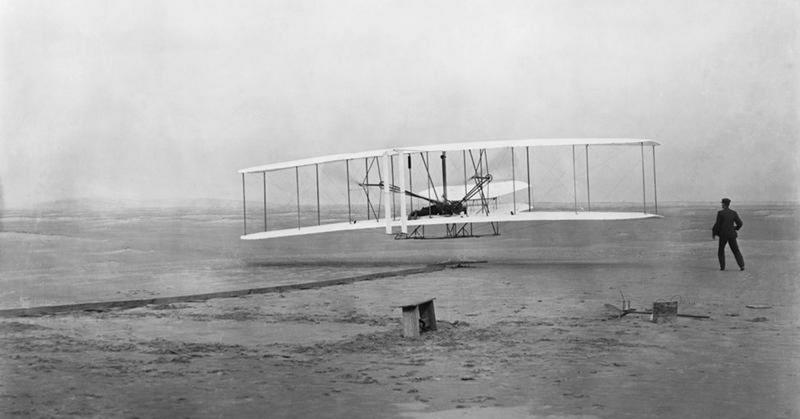The History Of Flight: From Da Vinci To The Wright Bros
By | September 22, 2021

The dream of flight is perhaps the most consistent and fundamental dream of humanity, spanning all cultures as far back as historians can see, as shown in cave drawings and ancient myths. They weren't always positive: The Greek myth of Icarus, a bold young man who designed his own pair of wings made of wax and feathers to soar like a bird but met a gruesome demise when they melted because he "flew too close to the sun," may have been metaphorical, but it was pretty clear re: the Ancient Greek attitude toward human flight.
Ancient Flight
Not everyone was afraid of trying out flight for themselves, however. As early as 400 B.C.E., Chinese inventors Mozi and Lu Ban created the first man-made flying device in the form of a kite. Around the same time, Chinese toy makers invented the bamboo-copter, basically a tiny toy helicopter that served little practical purpose but used the same rotor methods as modern-day copters. The Ancient Chinese also discovered the basic mechanisms of the the hot air balloon with the invention of floating paper lanterns.

Mid-Millennium: Da Vinci And A Load Of Hot Air
Leonardo da Vinci, famed Italian artist and man of science who consistently wowed the Renaissance era, had creative but ultimately misguided ideas about the future of flight. Like the Ancient Greeks, da Vinci theorized that bird-like wings could lift a person off the ground but ran into trouble when it came to figuring out the power source. After all, people are a lot heavier than birds and don't have the advantage of hollow bones.
By the 18th century, it appeared the balloon design would win the race, as French brothers Joseph-Michel and Jacques-Étienne Montgolfier created the first hot air balloons that could actually support a human's weight and successfully demonstrated their fire-powered machine by flying over five miles across Annonay, France on November 21, 1783. Ballooning and parachuting became a popular pastime in Europe over the next century and even proved useful in military conflicts like the American Civil War, when the Union Balloon Corp employed balloons for spying and reconnaissance.

20th Century Flights
At the turn of the 19th century, humanity was finally pointed in the right direction when English engineer George Cayley released his 1809 treatise "On Aerial Navigation," laying the groundwork for the study of aerodynamics. About 70 years later, Nikolous Otta built the world's first combustion engine, powered by gas and significantly lighter than the steam engines of old. Using these breakthroughs, Orville and Wilbur Wright built the first airplane, which they broke out for a historical test flight on December 17, 1903. The brothers took turns with their rudimentary aircraft, and though their flights only lasted a respective 12 and 59 seconds, it was the first controlled flight in human history.
The flight hardly made a blip in the media, who didn't seem to understand its significance, but after the Wright brothers perfected their techniques and invited the press to take pictures of their flying machine, the U.S. military quickly recognized its potential. Within a decade, the airplane was used both commercially and militarily—notably in World War I, when planes like the German Albatross and American Curtiss JN dominated the skies—and the Wright brothers were very rich men.
Ushering flight into the modern era, a 25-year-old Charles Lindbergh flew the Spirit Of St. Louis over 2,000 miles from New York City to Paris, completing the first transatlantic flight and proving the plane's potential for long-range travel. Today, around 100,000 flights take off every day across the world and, despite what some passengers' nerves lead them to think, have proven to be the safest and most efficient form of travel.

